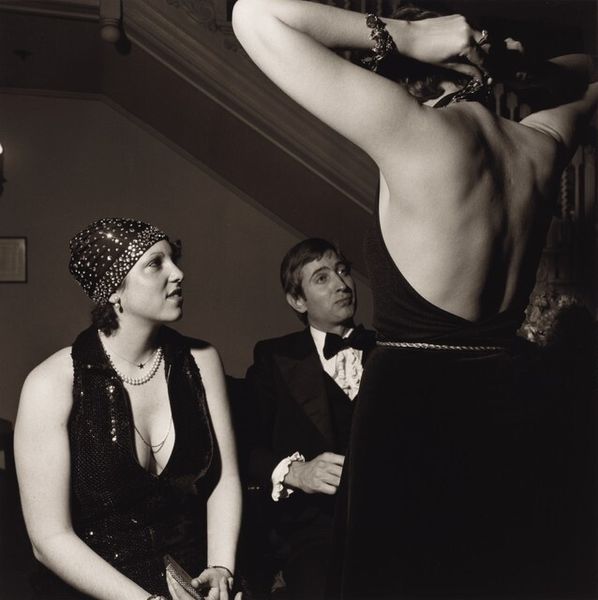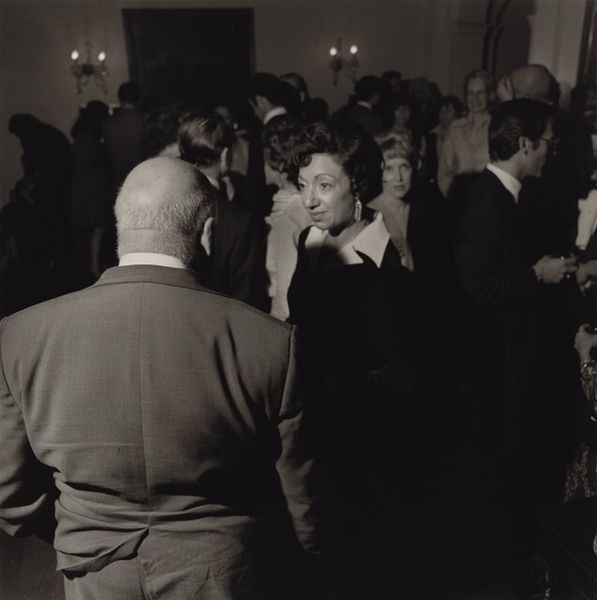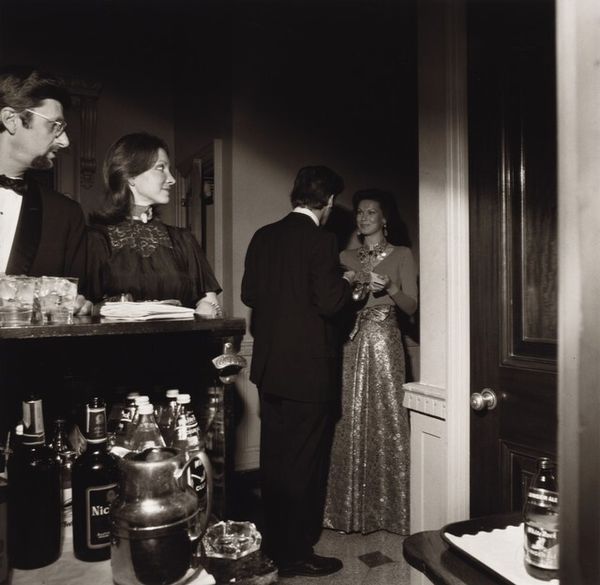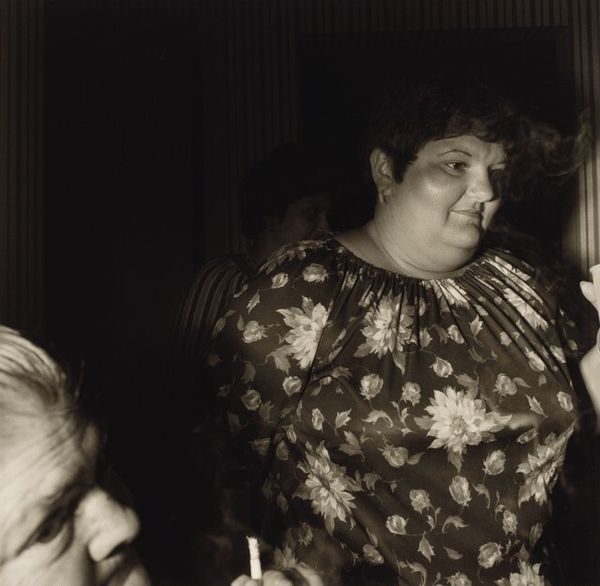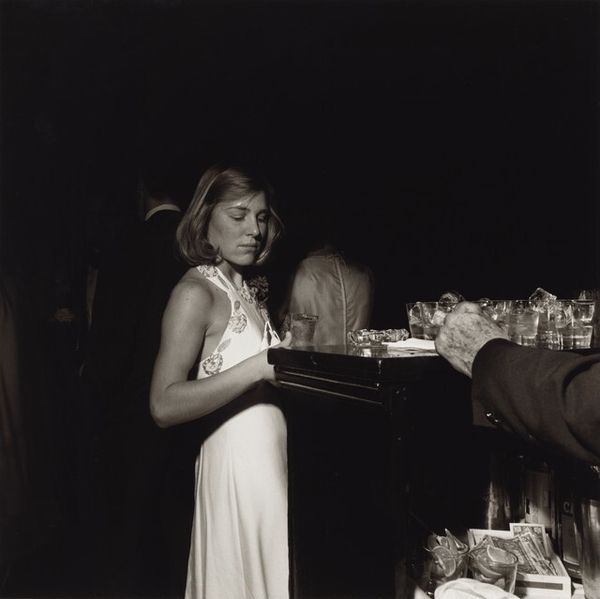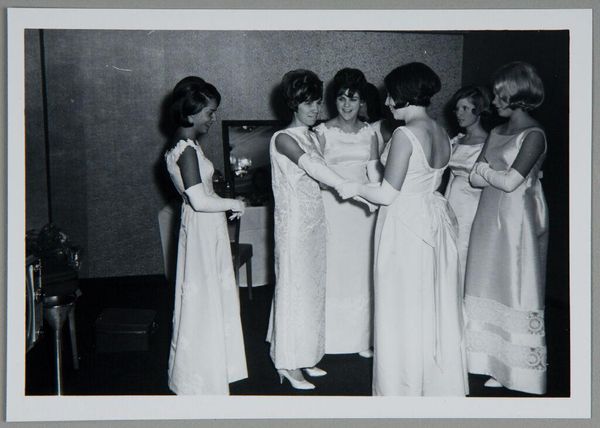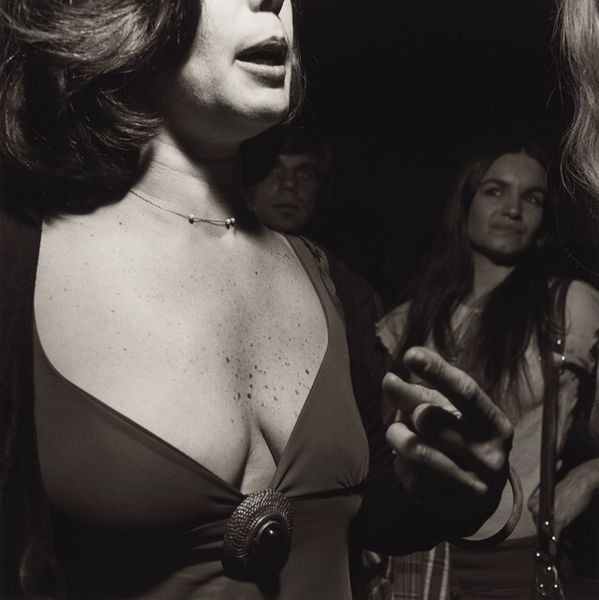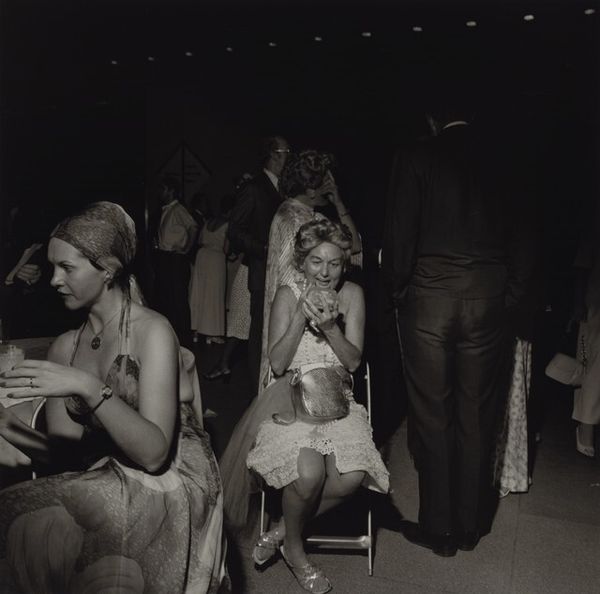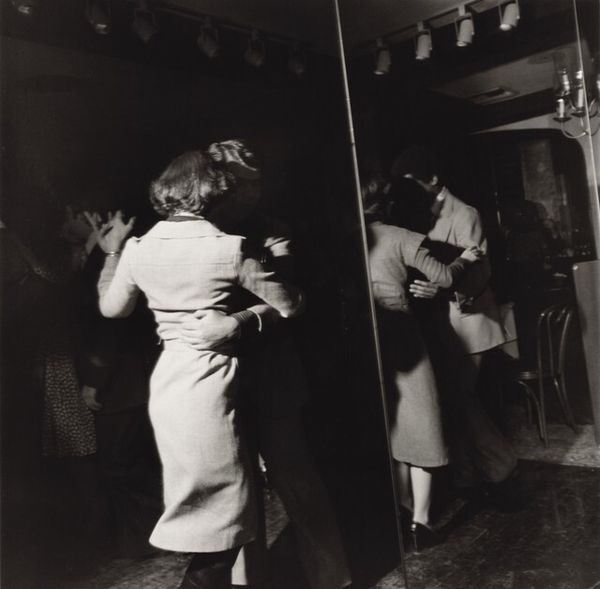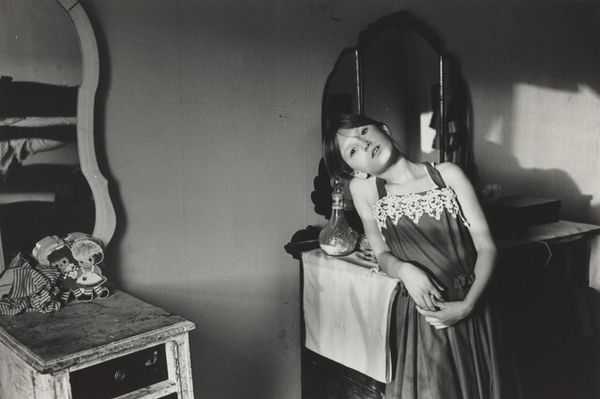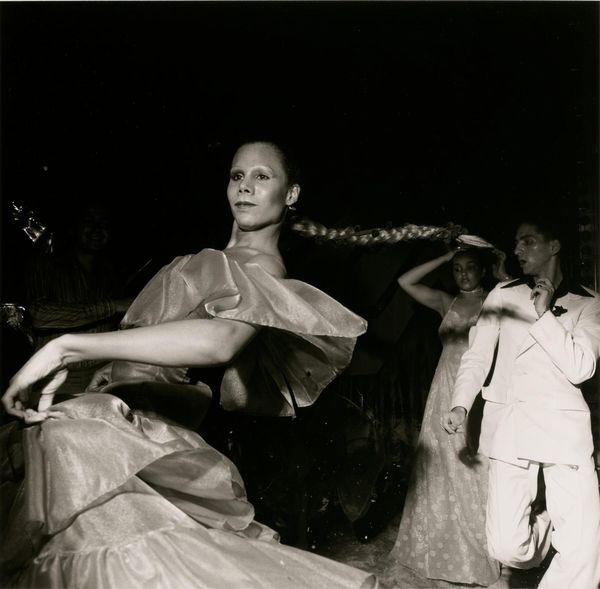
photography, gelatin-silver-print
#
portrait
#
social-realism
#
photography
#
gelatin-silver-print
#
monochrome photography
#
realism
#
monochrome
Dimensions: image: 38.8 × 39.1 cm (15 1/4 × 15 3/8 in.) sheet: 50.4 × 40.4 cm (19 13/16 × 15 7/8 in.)
Copyright: National Gallery of Art: CC0 1.0
Curator: Looking at this gelatin silver print from 1976, “Russian Ball, New York City,” by Larry Fink, one is immediately struck by the raw, almost voyeuristic perspective. What do you make of it? Editor: My first impression is one of palpable tension. There’s something slightly off-kilter, a sense of anxiety lurking beneath the surface of what should be a glamorous scene. The high contrast and tight cropping add to that feeling. Curator: The dynamism, of course, stems from Fink's frequent use of flash and the ways that informs his Social Realist style, sharply illuminating some figures while casting others into deep shadow. I am thinking of it in terms of the liminal spaces of performance and identity within elite circles, what do you see in the body language on display? Editor: Absolutely. I’m interested in the framing of the women. There’s a stiffness to the poses, a sense of them being observed, even judged. Note how a looming figure cuts into the frame in the foreground, how their shadow is almost looming. The body language speaks volumes about social constraints and the ever-present gaze. Curator: Note also the woman's gaze, cast upward—what could that upturned gaze possibly signify here? It's interesting how photographic framing itself influences perception. Her pose almost resembles earlier images of women being surveilled. I wonder, what are the continuities of these gestures and expectations across social performance and over time? Editor: It makes you question the whole power dynamic at play in these events and who is really in control. Larry Fink was renowned for his ability to depict countercultures alongside privileged society gatherings. To show both starkly revealed a hidden power relationship. The contrast in subjects only heightens the social commentary. Curator: The 'decisive moment' aesthetic certainly complicates matters here. It's like Fink is capturing something unrehearsed. How do we interpret the subjects in these high society realms who were now becoming comfortable having their pictures taken? Do these figures embody, for you, any specific socio-political tensions inherent in 1970s New York? Editor: I believe so. Think of the backdrop—a city grappling with economic anxieties, racial tensions and profound cultural shifts and all juxtaposed to the opulence. By framing a photograph in these stark, stark contrasts, Fink has achieved the best social realism by allowing context and symbol to reveal inherent truths in their juxtaposition. The work seems timeless and yet, so precisely, about one moment. Curator: Precisely. So many echoes. The work's ability to resonate across time makes it essential, I feel, in the archive of social documents, doesn’t it? Editor: Absolutely, an important piece.
Comments
No comments
Be the first to comment and join the conversation on the ultimate creative platform.
